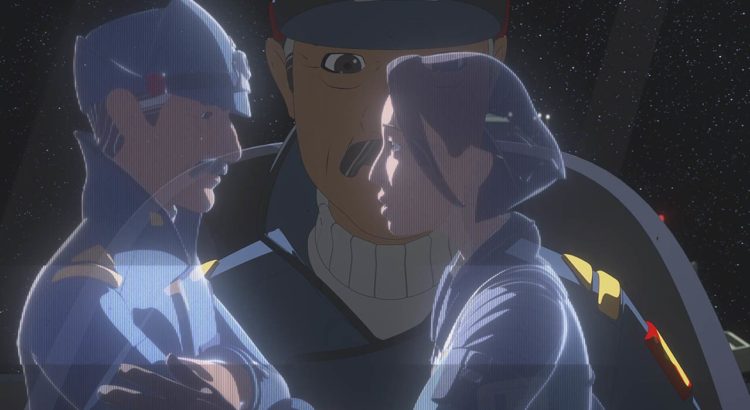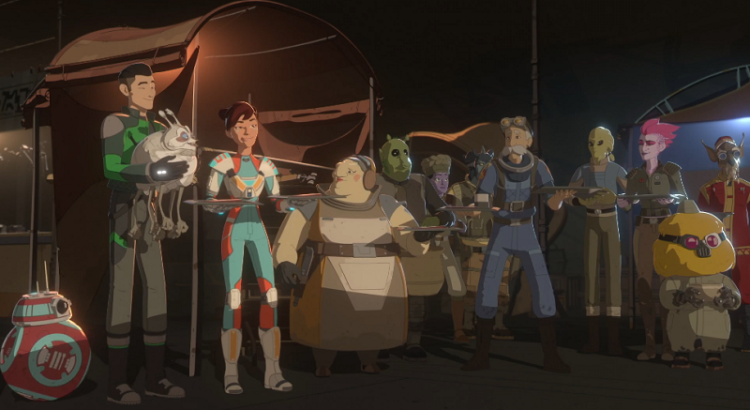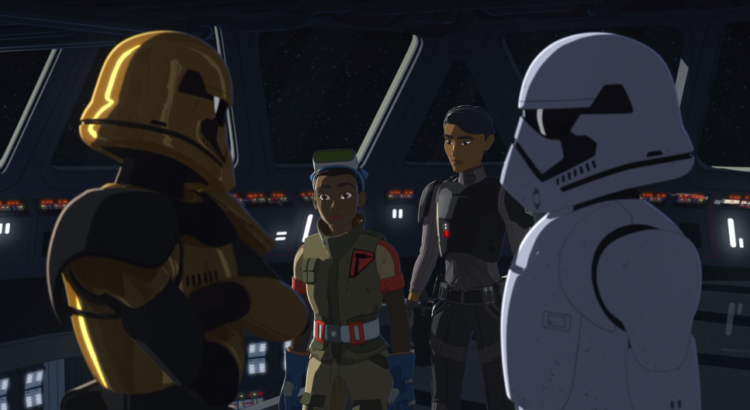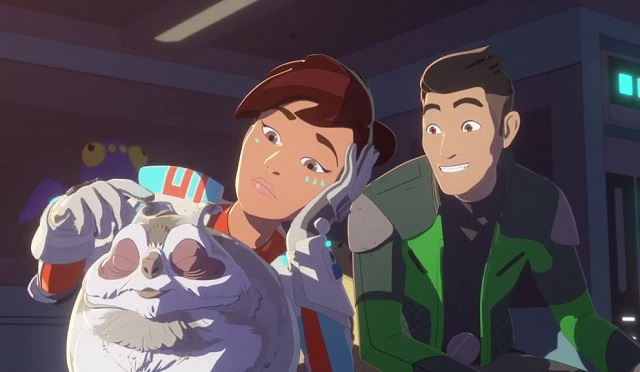The finale of Star Wars Resistance is going to be upon us shortly. While the middle section of the show’s second season hasn’t been as meaty or meaningful as some of us were perhaps hoping, as we’ve moved toward the end the show has picked up momentum. More than anything, it has given us some memorable new characters, such as Venisa Doza, while still managing to find time to give older, established characters moments of depth and development. An understated but nonetheless important character who has grown quite a bit over the show’s run is who I’ll be highlighting today: Captain Doza himself. But first, let’s circle around on our main character Kaz Xiono for a bit of context.
In the episode “No Place Safe”, Kaz makes the decision to leave the Colossus. The station has found a safe haven on a distant planet, and they have formed an alliance with the local population to allow them to stay out of the First Order’s way, restoring something like their previous status quo on Castilon. With this lull in the fighting, Kaz has a moment to contemplate, and comes to realize that he isn’t content sitting and waiting for the war to end or for the First Order to find them again. With his friends out of danger for the moment, he makes the decision to go back to the fight, to rejoin the Resistance proper. He makes that decision because, in the end, he wants to help people, and now that the Colossus no longer needs his help, he is ready to move on and keep fighting the First Order elsewhere (even if it breaks the hearts of people like Neeku and Torra to see him go).
The episode winds up putting him back where he started when their haven is discovered and the Colossus is forced once again to flee, but the important thought that Kaz has of going where people need him and seeking only to help seems to resonate within Captain Doza. In the very next episode, “Rebuilding the Resistance”, Doza makes the unilateral call to not only allow the Resistance to bring its new recruits to his station, but even decides that they can stay permanently, making the Colossus into a mobile base for the Resistance and its pilots and officially abandoning his neutrality. Inspired by Kaz, and also by the examples of his wife and daughter, Doza is making a decision that he probably should have made long ago.
Read More




